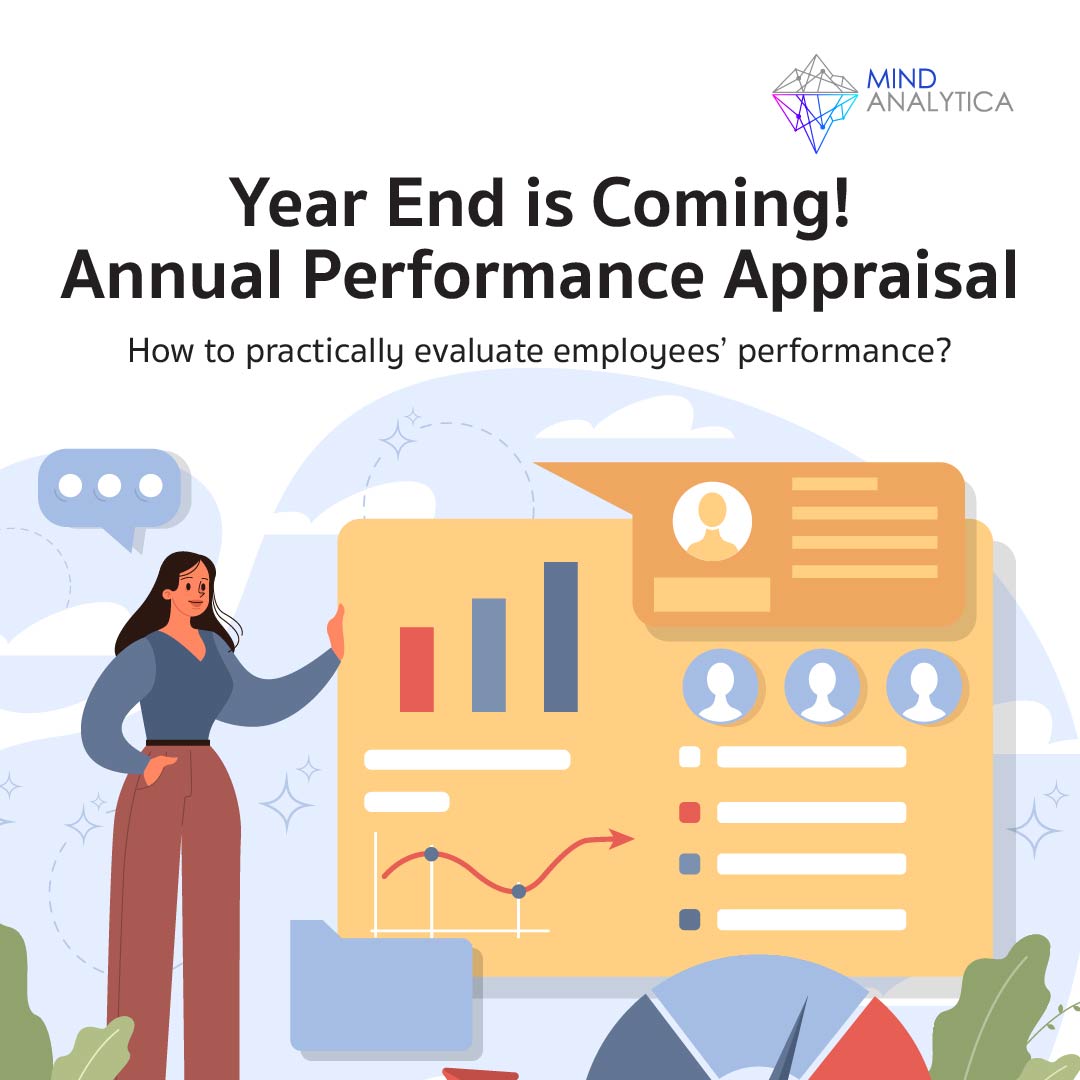Year End is Coming! Annual Performance Evaluation
27 ธันวาคม 2566 - เวลาอ่าน 3 นาที
How to practically evaluate employees’ performance?
During the end-of-year period, there is an essential task in organizations: evaluating the performance of employees. This evaluation aims to assess both the progress of the work and the progress of the personnel. Additionally, the evaluation serves as a communication tool to inform employees about organizational expectations, goals, and desired outcomes. Regular performance evaluations also provide insights into employees' perspectives and their communicated needs to the organization.
However, yearly evaluations need to be conducted using high-quality assessment tools to ensure accurate results. Inaccurate evaluations, such as when an employee consistently meets the criteria but is evaluated as performing below standards, can lead to a lack of trust in the organization and demotivation in the workplace.
For evaluations to be beneficial, they must possess both reliability and validity.
Reliability refers to the consistency of assessment tools in measuring results consistently or with minimal variation each time. For example, evaluating employees' work performance two months apart should yield similar results if their performance remains constant. Similarly, evaluations from multiple evaluators should show comparable scores.
Validity, on the other hand, refers to how well an assessment measures what it intends to measure. For instance, if two employees in an organization perform differently based on organizational standards, their evaluations should reflect this difference. If both employees receive similar scores, it indicates a lack of validity in the evaluation method.
To enhance reliability and validity in performance evaluations, the following methods can be adopted:
1. Creating specific assessment questions aligned with organizational work criteria rather than general assessments. For instance, evaluating the efficiency of communication among evaluated employees to measure their communication levels instead of a general evaluation.
2. Providing direct training to employees on the evaluation process. This helps prevent confusion about evaluation criteria and objectives, thereby improving the quality of evaluations.
3. Increasing the frequency of evaluations within a year to reduce evaluator bias and improve assessment accuracy.
4. Using job-specific assessment methods or questions as each job position often has different performance objectives. Using uniform assessment methods or questions for different job positions may lead to unfair evaluations.
5. Gathering performance data from various sources such as supervisors, colleagues, subordinates, clients, suppliers, or specific work criteria like sales or production errors.
Implementing these evaluation methods can help employees understand organizational expectations better, plan their work accordingly, and be more attentive to evaluations at the end of the year.



